King bolete mushrooms, also known as porcini, are one of the most famous edible mushrooms in the world. Here I'll describe everything you need to know about foraging the North America varieties, which are very different from European.
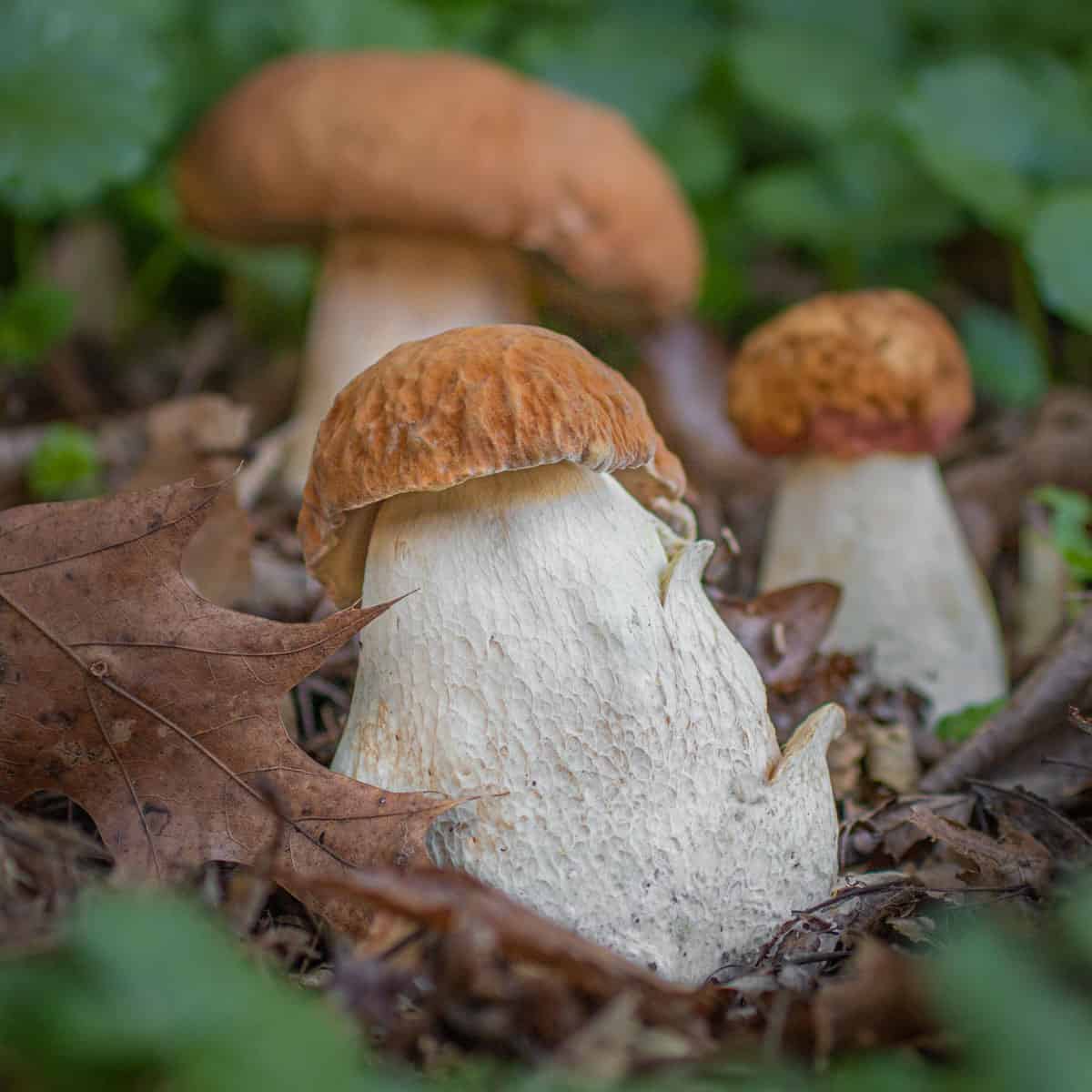
Pictured above is not the dried mushrooms you see in the grocery store. True, North American porcini can be insanely difficult to hunt, and even when you do find them, others may have gotten to them first. The window of perfect harvesting can be a couple days, and that is why these are truly treasures of the woods.
I'll remember my first porcini hunt forever. I was at work in the kitchen when my mushroom hunting/disc golf partner sent me a photo of some mushrooms he'd run into, asking me what they were. When I saw the picture I told him: "take them all!" I knew that fresh porcini might be around in our area, but I'd never seen them myself.
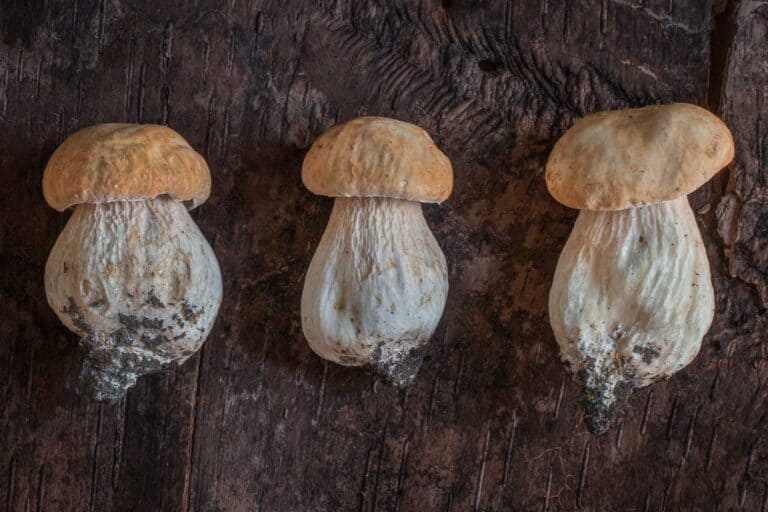
I went with him to the spot the next day. The porcini were sitting on the side of the woods where our favorite chanterelle patch was, hidden, waiting in the grass next to the old oak trees. I'd read about them for so long but never picked them, it's really an experience to see these guys growing, like something out of a fairy tale. It felt like every one we found was calling to us and put there just for us to find.
After taking a few pictures we left, making sure to not leave a trace of them since mushroom hunting has a way of making everyone secretive. Once you find something somewhere, anywhere, it feels like it should be your patch. I even cut out the buggy stumps and threw them in the dehydrator to make powder via the coffee grinder.
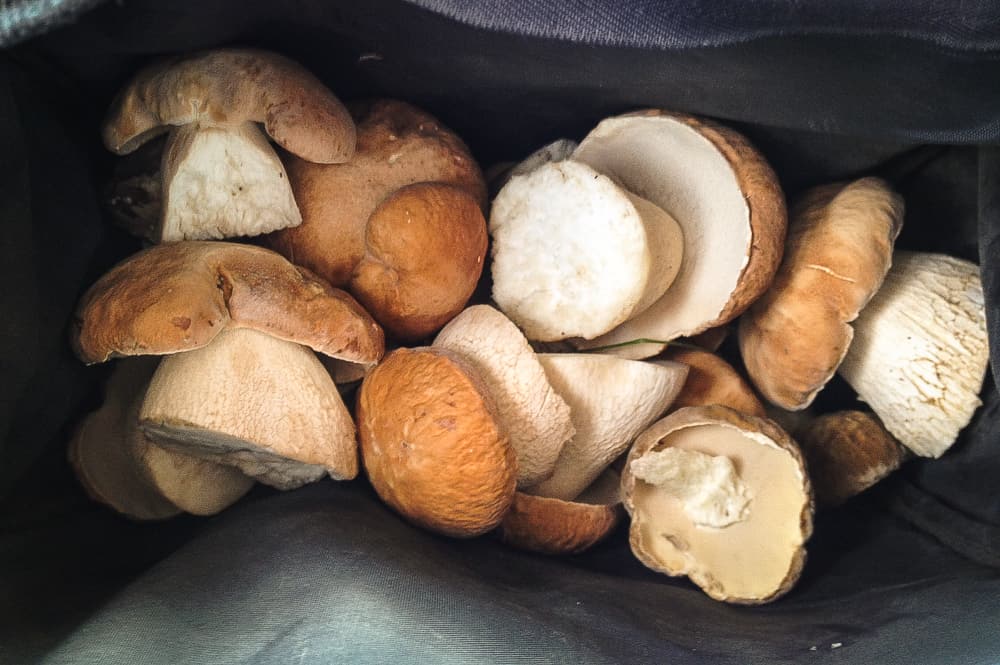
Unfortunately, we learned Boletes have a very short life cycle. The king boletes that we found were good for about 2 days, that's it. After that they turn into maggot hotels, if their in the ground, or if they're in your fridge. A couple days later you'll go back to the patch and see nothing but a puddle of black slime on the ground where the mushrooms used to be, although you can always hope for some young buttons.
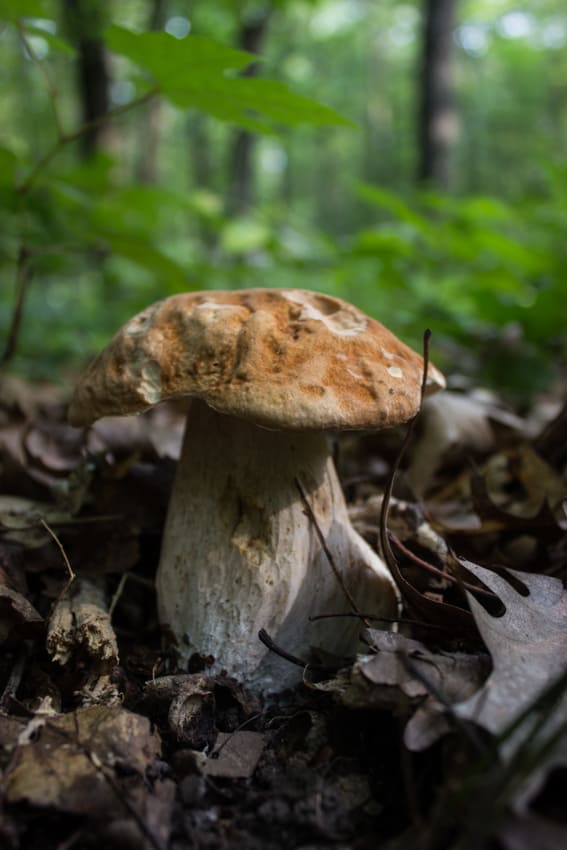
Habitat
The King Boletes pictured here like to be around oaks where I live In Minnesota, which is where the majority of people find them. I have the pleasure of knowing a few friends from Eastern Europe in the area though, and they prefer to pick porcini in areas with pine trees, which is more difficult to find from my experience.
Even though it's more difficult, it's definitely worth it to hunt for porcini in pine, where I live, the pine porcini are much more resistant to bugs that tear the oak loving porcini to shreds. Pine porcini I've seen in the Midwest will also have a slight red color to their stem. If the pine "porcini" are truly porcini, I don't know, but I know they're delicious.
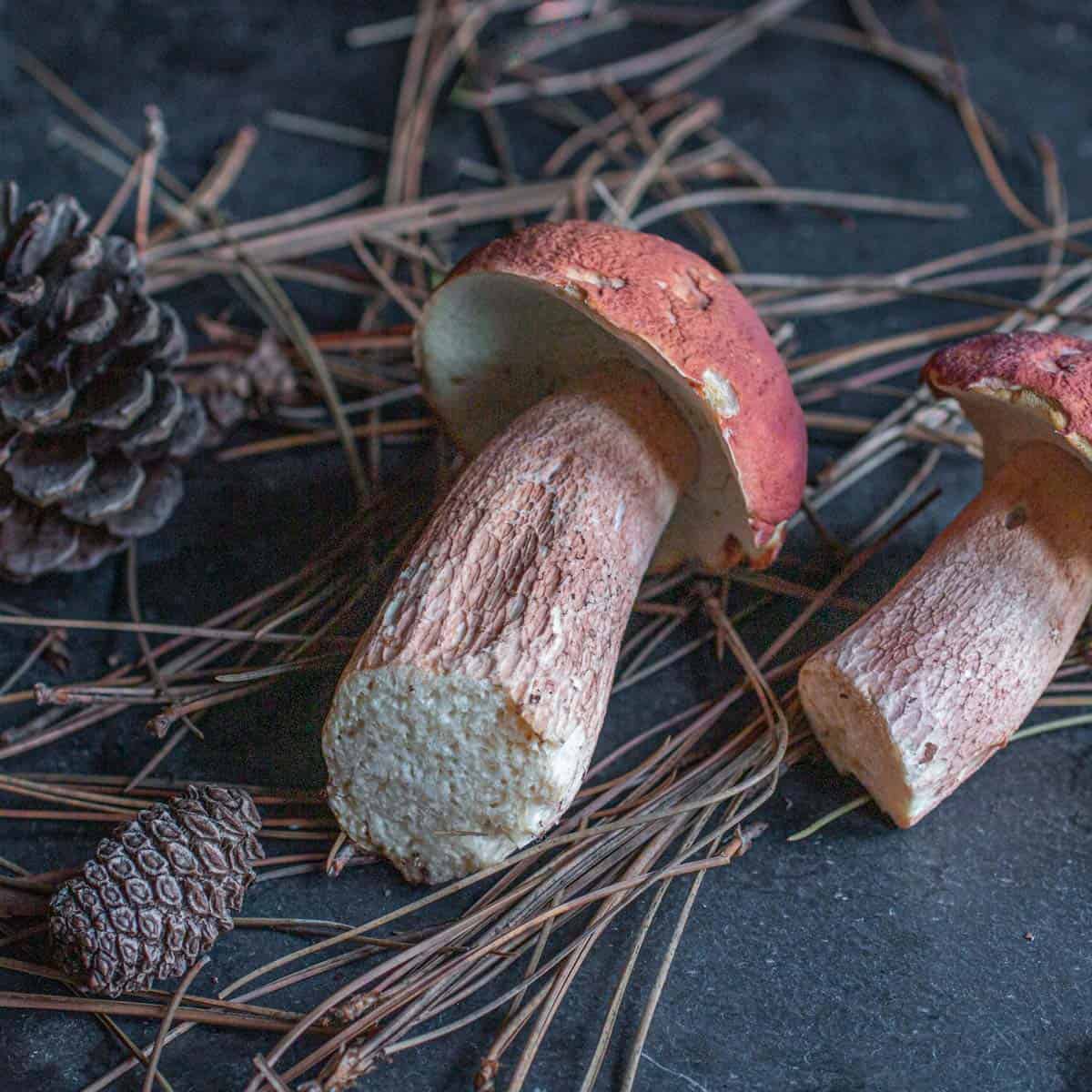
I've found them in the woods, but I also find them hiding in long grass on the edge of the forest, so it's a good idea to check around the forest peripheries while you are hunting for shrooms in the summer, especially on little slopes.
My best patch is a slope of about 60 degrees, with long grass right on the edge of a chanterelle patch rich in white oak. They will start to fruit, from my experience, right before the Chanterelles start to fruit in the summer, then sporadically throughout the summer in other places as well, rain providing.
Follow the Rain
Along with knowing the right trees, the other important thing for hunting porcini, and other boletes, is keeping tabs on the rain. After a strong summer rain, I like to wait a day or two, then I check my porcini patches. If I find just one porcini, I uncover the leaves in the area and look for the young buttons, which can be completely invisible, buried under leaf cover.
Unfortunately, they are at the best eating stage when at that size, since, as they grow and rise above the leaf litter, the bugs will have likely gotten to them before you. If you find old porcini though, you hit the jackpot, as now you have a place to back and look for them after the next rain, and then in the years to come.
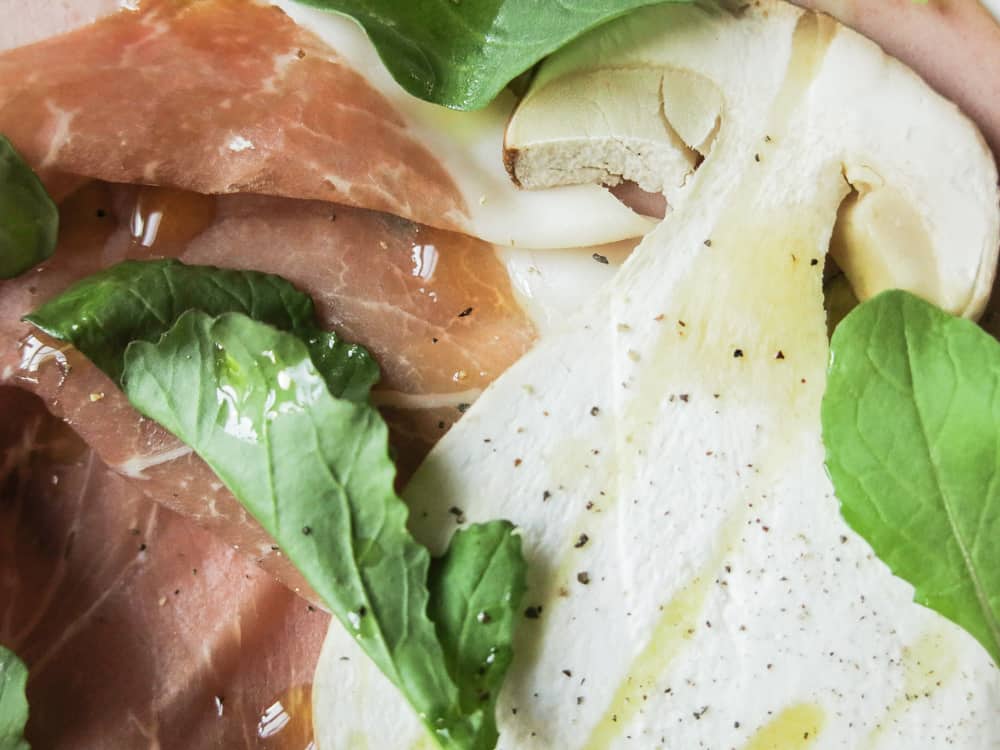
Cooking
If you find some perfect fresh porcini you're a very lucky person, throw them in a pan with butter and salt, slice them thin and eat them raw, whatever you do, by all means enjoy them in their fresh state since they're an experience most people will never understand or appreciate.
Unfortunately, porcini and boletes in general are parasitized quickly by bugs, as in more quickly than any other mushroom I've ever found or cooked. Typically I have to dry these to concentrate their flavor and get around their short shelf life/bug damage.
A Wild Mushroom You Can Eat Raw
Yes, you can eat porcini raw, and it is very common, especially in Italy. That being said, it's a good idea to start off with small amounts, say a slice or two.
Eating these raw is one of the purest ways to taste the flavor of one of the most sought-after mushrooms in the world, but, to compound the frustration of even finding them in the first place, only the youngest buttons you can find, without bug damage should be eaten raw in my opinion. Theres an example of a recipe for raw porcini below, but something as simple as really good olive oil and salt is just fine.

Look-A-Likes
There's a couple boletes that looks very similar to the Porcini. The most widely known in North America goes by thge name Tylopilus felleus, and it's horribly bitter, although not poisonous from my knowledge. How I can usually tell if a mushroom is a felleus is that it will be growing directly from wood, which king boletes do not, also it may have a pink hue to it's pores.
You can also tell if a bolete is bitter in the field by nibbling a small piece of the mushroom and spitting it out.But, I know of one person who preserves them in maple syrup and puts them on ice cream, and another that uses them to make bitters for drinks. To each their own, I guess.
Species "Complex"
If you're like me, the first porcini you ever cooked was probably dried from Italy. American porcini don't taste like Italian porcini do, they're much more mild when dried.
The reason is that they're aren't the same species, technically. We don't have one species of Boletus Edulis across the world, rather within the Boletus genus are many sub-species, with mycologists continually discovering new ones, and regularly re-classifying those we've already discovered. I don't know exactly what the species are I pick in Minnesota and Wisconsin yet, and there's nothing wrong with that.
That being said, it can be difficult to know sometimes exactly what bolete you have, and if that bolete is "porcinoid" or not can subject to a little creative license. The best advice I can give is that I have tried and true patches where I can expect them every year, rain providing, but I know some of them might have slight variations.
There might be a slightly darker cap, or a slightly lighter one, or side by side one might taste a fraction different than another. At the end of the day, if you have a basket of "porcini", relatively free from bugs, you won't care that much about slight differences in species. We have many porcini, so enjoy the mystique while science allows it to last.
A Few Midwestern Porcini
Here's a few species I feel confident enough to put at least a tentative name to that you may see.
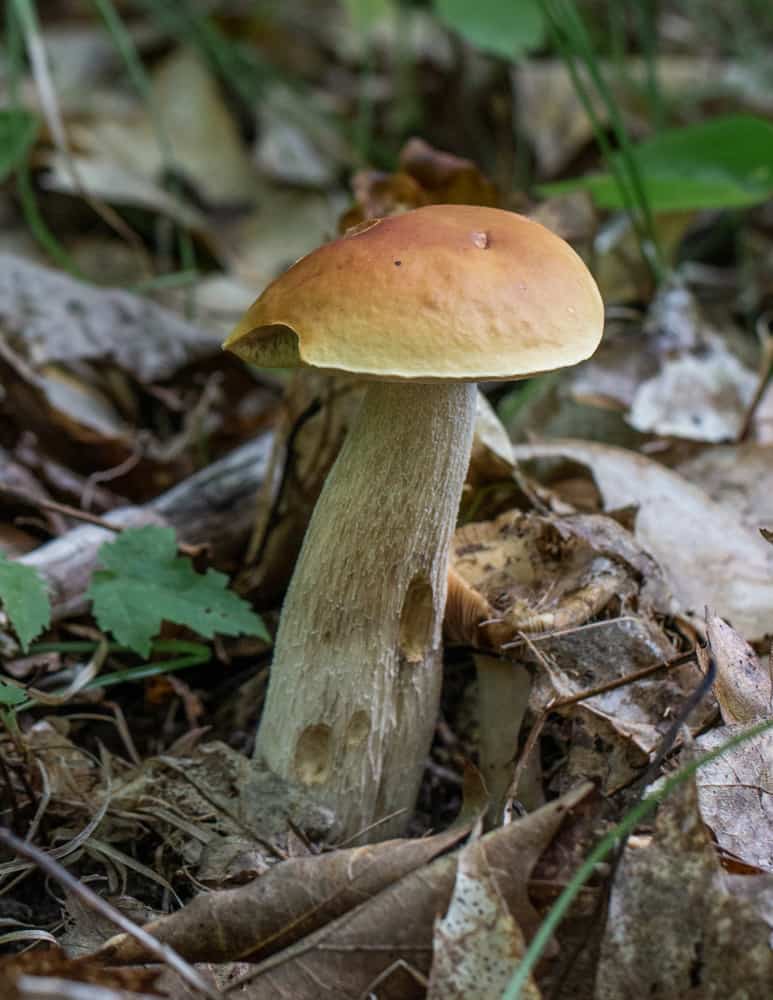
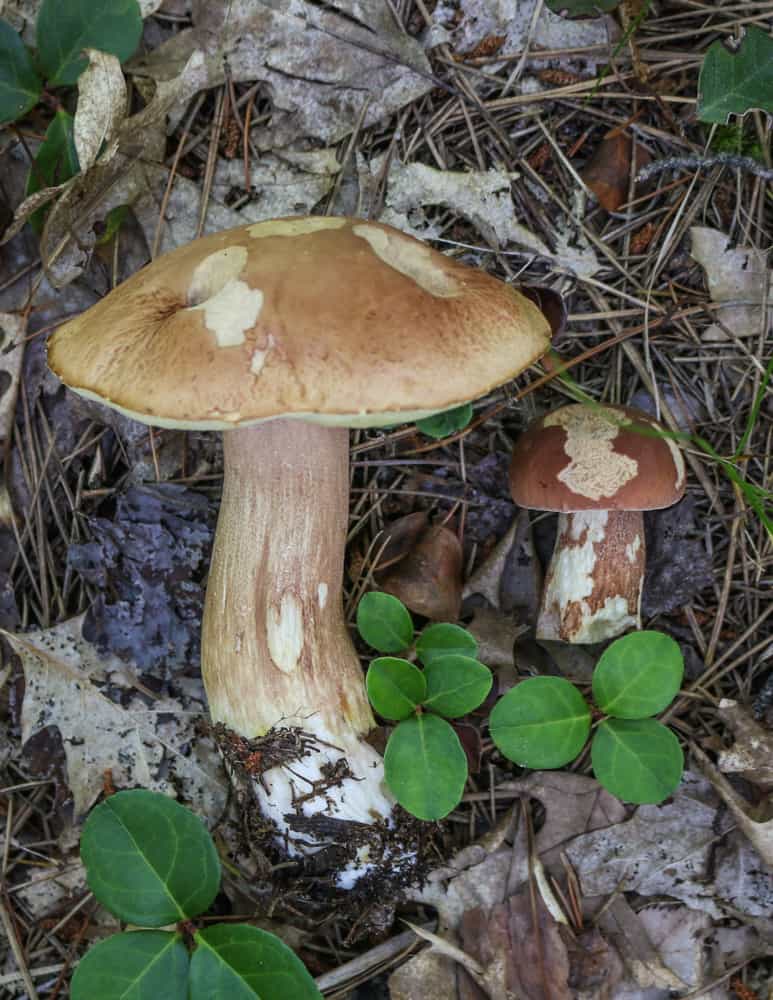
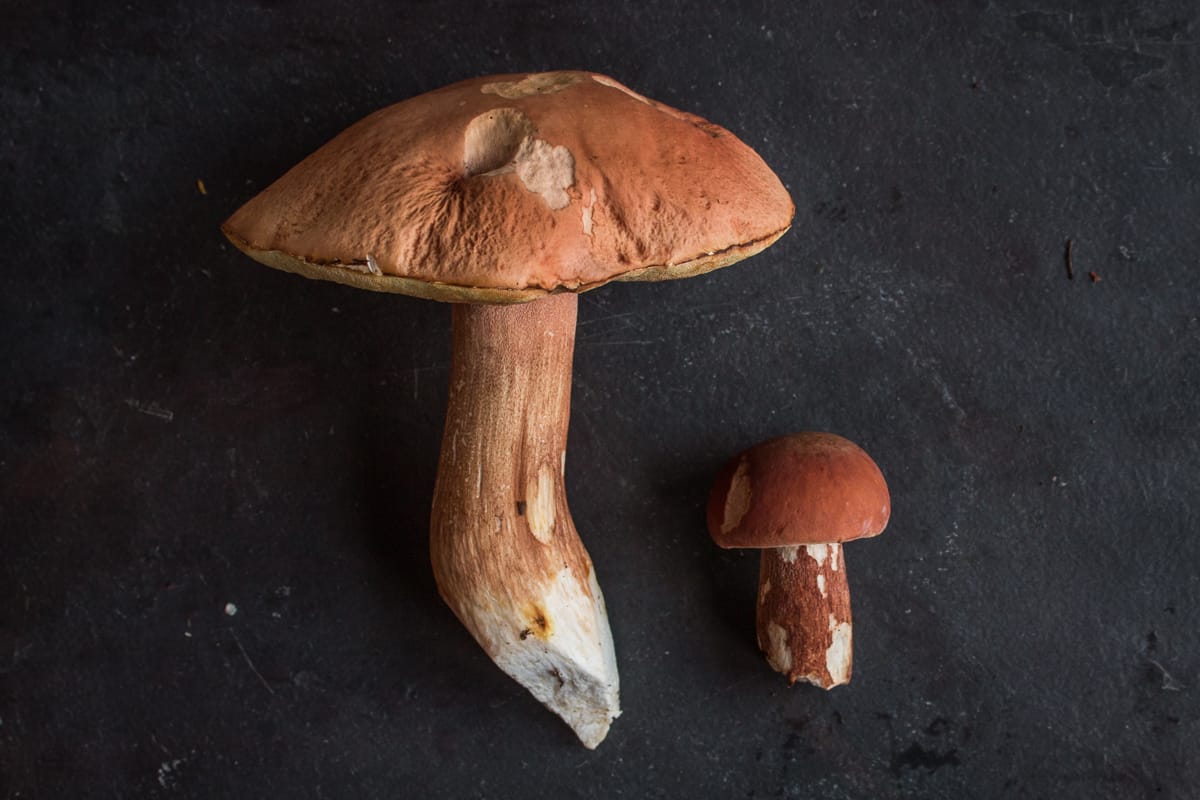
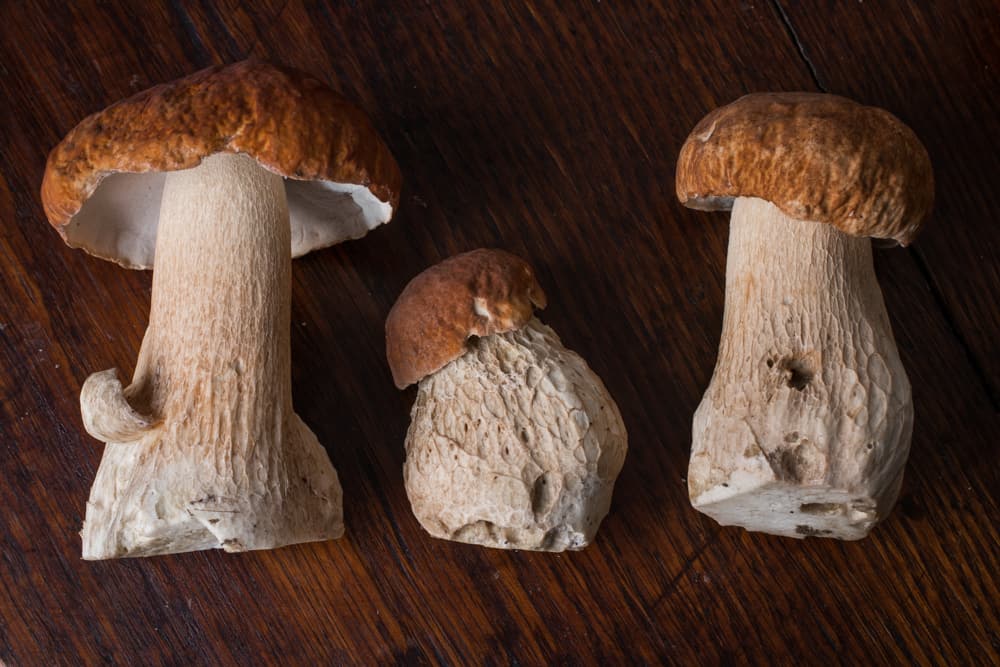
Preservation
King Boletes are good to eat fresh, but finding young, untainted specimens (Also known as "Bouchons" or wine corks) will be nigh impossible from my experience picking them, at least until you have a series of reliable patches.
There have been a few times when I've picked perfect buttons, and I'll provide you with some recipes for them, but it's not easy to come across them small, firm and perfect, and as I mentioned, at that stage in my area they're often invisble, and covered by leaves.
These and most other boletes also have really short shelf lives when they are fresh. You have only a few days to use them. Drying them is absolutely your best bet to retain and concentrate their flavor. Although they can definitely be pickled or stewed and frozen.
Recipes
Recipes I've made specifically for porcini or where they can be substituted.
- Wild Mushroom Conserve
- Wild Mushroom Duxelles
- Fresh Porcini Butter
- Fresh Porcini With Radish Snaps and Peas
- Fresh Porcini Julienne
- Mixed Wild Mushrooms With Garlic and Parsley
- Cream of Porcini Soup With Black Walnut Pesto
- Dried Porcini Infused Soy Sauce
- Beef Commercial With Dried Boletes
More
35 Essential Wild Mushrooms Every Forager Should Know
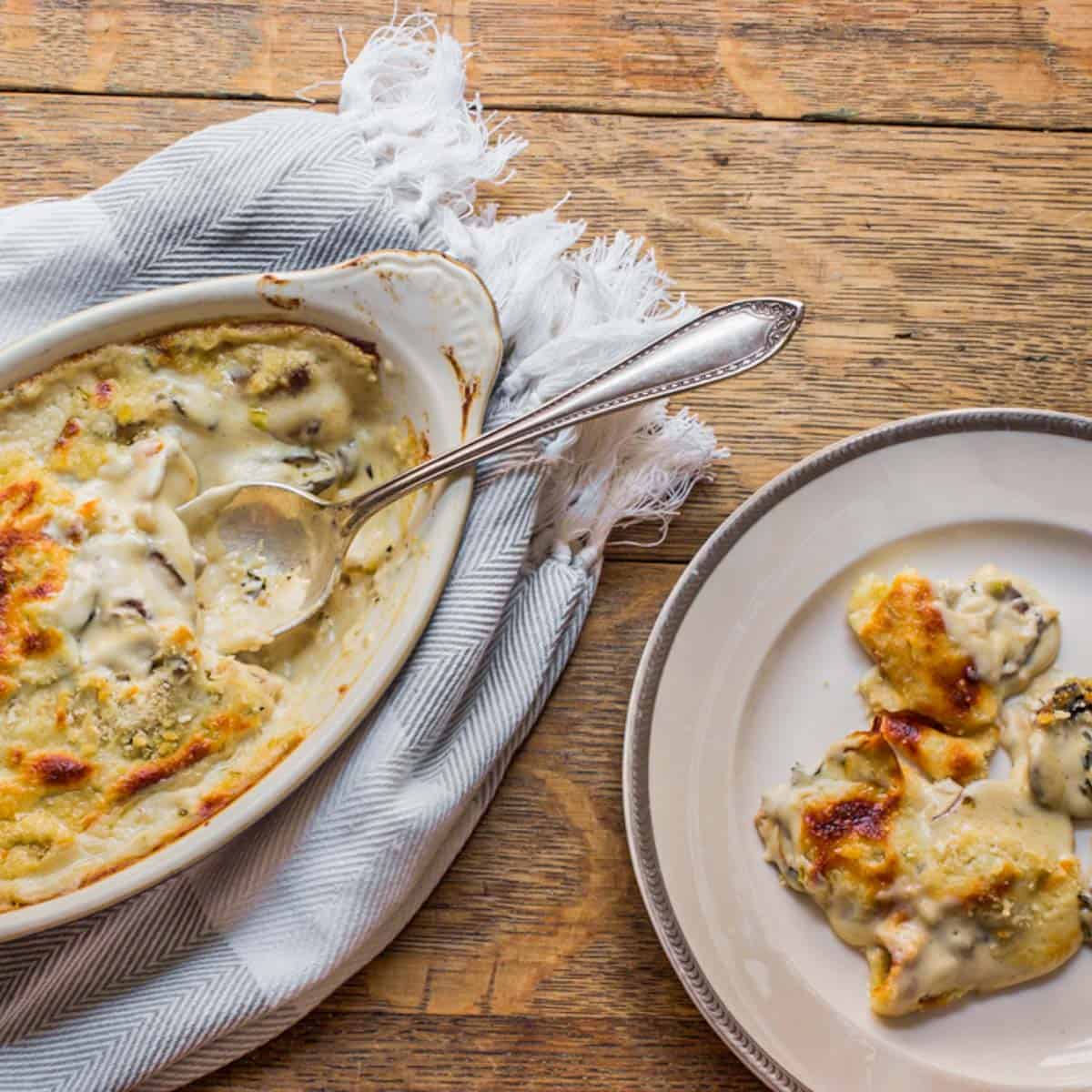

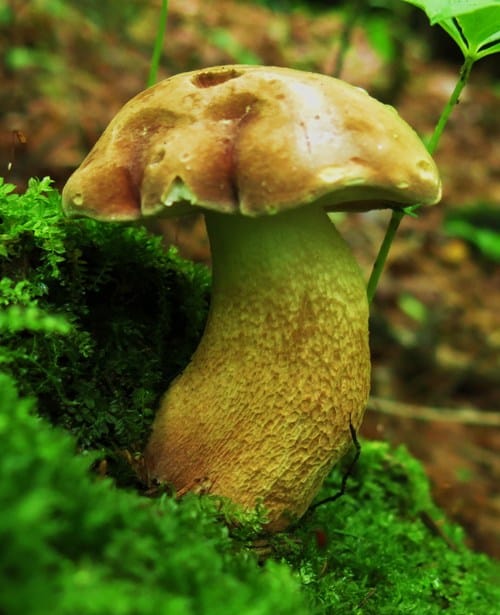
Lauren Risby
A million thanks to you! 🌟
Billy
Thanks for the article! Just harvested several around spruce trees in western Washington state 2-3 days after rains. These are fairly robust, hang around for several days in the field, and fridge. Two types, larger with more flattened cap and cream-green pores, another with rounder cap and white pores. Both have white insides. From another harvest of the larger type flavor was enhanced when dried, like it but a touch of ripe sock odor :o). Some like 'em strong!
Magnus
Canadian here, I’ve surprisingly found King boletes near Revelstoke BC, which is also in the Pacific Northwest region. Oh boy they were big and juicy, best tasting mushrooms I’ve ever had.
Judson
I am in Colorado and just found 5 King boletes about the size of a baseball cap each. Thanks for the recipes!
Alan Bergo
Thanks Judson. You bet.
Sarah
In England I always find porcini near a combinations of 3 things; old birch trees, holly bushes, and fly agaric.
Mark Szarek
Fantastic article, nicely done I have limited luck hunting for them here on the north shore of Massachusetts.
Brent Meyers
Hey Alan,
I love the website. I've been sifting through your various entries on different species and I really like the breadth of species you cover coupled with the gathering stories. I've been living in Barcelona for the past four years and I've done quite a lot of mushroom foraging. My hunch is that what you are calling Boletus edulis is a very similar American species. Both here in Catalunya and in France boletus edulis only associates with conifers. Also, I noticed that the pattern on the stipe of the American variety you posted is different than Boletus edulis here in Europe. I just picked some Boletus Edulis yesterday, and the reticulation on the stipe is much denser, alternates between light/dark (light ridges and dark indentations), and is not as ¨pockmarked,¨ as in more of a fine netting type of pattern.
Alan Bergo
Sure, I suppose I should technically describe every Boletus in this post as "porcine-oid", but that sounds silly. This is exactly why I made a subheading trying to describe the species complex. There are so many variations of "porcini" that it's enough to make your head spin, and the common person does not need to be able to differentiate 30 variations and subspecies to have a good meal as long as they can separate the genuses Tylopilus, Suillus, Boletus, and Leccinum in my opinion. My goal here is to try and make mushroom hunting accessible to common people, and to distill complex morphological and taxonomical differences into a digestible, understandable format. Of course European B. edulis are genetically different from what I pick in the U.S.-there's no question there. Calling something a porcini, in this day in age, to me, does not assume it's exactly B. edulis, since there are so many different porcine-oid mushrooms.
Michelle
You have met your goal, and absolutely enjoy all of the articles of yours that I have read so far! I am a first year forager, and I have found coral tooth fungus, lions mane, oysters, king boletes, shaggy mane, chicken of the woods, ringless honeys, and multiple others that I just haven’t identified or tried to eat yet.
Nathan Perrier
When do King Boletes start growing?
Alan Bergo
In Minnesota where I hunt, they will start around July.
Janet Opdyke
There are two good ways to quickly distinguish Tylopilus felleus (known in Michigan the bitter bolete) from Boletus edulis (king bolete or porcini). The bitter bolete has brown reticulation, or "netting," on at least the upper third of the stalk, whereas the king's is white. Second, put a tiny piece of the cap on your tongue. If you perceive a bitter taste (they really do taste awful) give it a pass. Spit out the piece. Other than this, it's hard to tell one species from the other except that the ratio of bitter to king here in the northern Lower Peninsula seems to be about 100 to 1.
The kings do seem to have many variations in different locales. Here we most commonly find Boletus chippewaensis. Looks a little different, tastes just as good.
Rolf
Hi Alan,
I'm trying to"crack" the bolete code,having a blast hunting this year.
Your posts have been helpful.The boletes you have pictured look like Boletus separans,not edulis.
They match the pics on Michael Kuo's MushroomExpert.com and are similar to what I have been finding,under oaks.I have been finding what look like edulis under spruce ,but only on the north shore.
PS,you found white chanterelles on another post,I am so jealous.
henry porter
Boletus edulis, not Boletus Edulis.
Tylopilus felleus, not Tylopilus Felleus.
Entoloma abortivum, not Entoloma Abortivum.
Generic name is capitalized, specific one is NEVER capitalized.
Anonymous
So why didn’t you capitalize your own name? Practice what you preach.